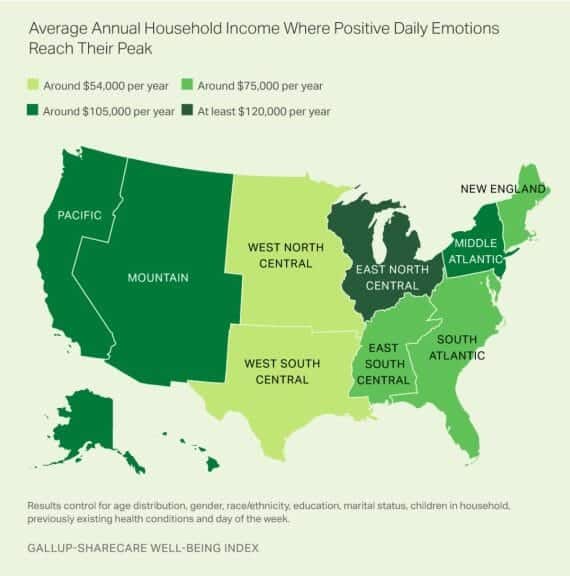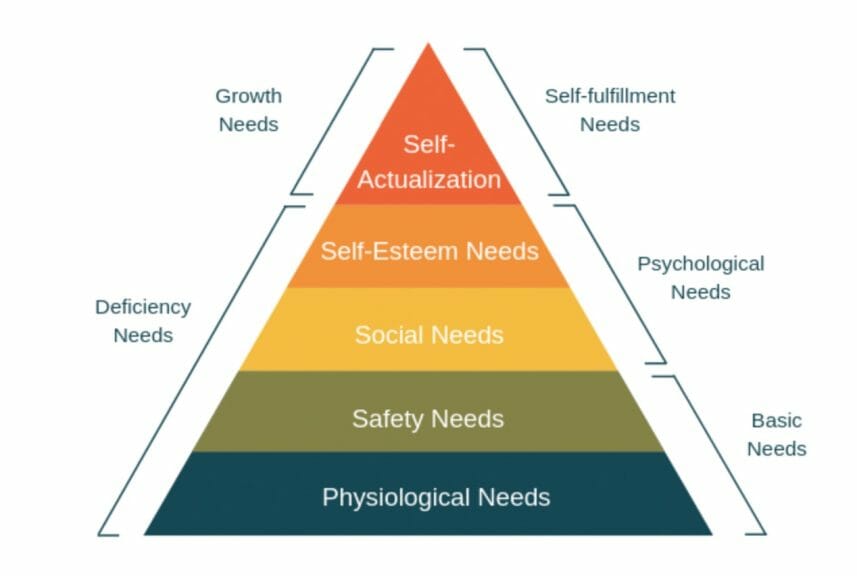It turns out Blair Waldorf was right when she said, “Whoever said that money doesn’t buy happiness didn’t know where to shop”. A study by Gallup found out you can put a price on happiness – and it’s $95,000 a year.
According to a Forbes article that came out in 2018:
The income at which individuals experience peak satisfaction with their lives has been determined, and it’s $95,000. If you want to settle for just emotional well-being, say psychologists from Purdue University and the University of Virginia, you can aim lower: between $65,000 to $75,000.
Forbes
These findings were based on stats comparing the annual income and reported life satisfaction of 1.7 million people across 164 countries, gathered by the Gallup World Poll.
The Price of Happiness Varies
It should be specified that the $95,000 figure is a global average, and therefore a sweeping generalization. The price of happiness changes dramatically from country to country based on various socio-cultural factors including education level, religion, and the type of subjective well-being (emotional well-being vs life evaluations). In general, high-income countries with higher costs of living pay a higher price for happiness, and vice versa. For example, happiness is the most expensive in Bermuda ($143,933), Australia ($135,321), and Israel ($130,457), and cheapest in Suriname (6,799), Argentina ($8,778), and Angola ($8,921).
Even within the United States alone, the optimum annual salary changes depending on which state you live in. The central states peak at around $54,000 a year, whilst other areas can range from $75,000 – $120,000, as demonstrated below.

Diminishing Returns
There is, however, an optimal number for a reason as once this “satiation point” is reached, happiness plateaus. Moreover, the study found a “turning point” in some countries after which life evaluations actually got worse. This can, in part, be accredited to a general increase in workload, responsibilities, and demands on time as opposed to the actual salary. However, the more significant factor is Maslow’s Hierarchy of Needs. Once our basic and optimal needs have been met, we turn our attention to material gain and social comparison, a recipe for misery.

Measuring Happiness
On the one hand, it is possible to reliably measure happiness through its emotional and cognitive components, according to a report from 2015. However, in social sciences research like the one conducted by Gallup, it is often measured through self-assessment, i.e. “subjective well-being”. In this context, happiness can be defined in the following terms:
The degree to which a person evaluates the overall quality of his/her own life as a whole positively. In other words, how much one likes the life one lives.
Encyclopedia of Quality of Life and Well-Being Research
A problem with this methodology is that happiness is fundamentally subjective, differing in interpretation from country to country. This is demonstrated in an article by The Atlantic which describes 4 differing models of happiness and their correlating cultures:
- Happiness via relationships – United States.
- Happiness via a state of higher consciousness – Southern India.
- Happiness via doing what you love with others – Nordic countries and Central Europe.
- Happiness defined by the feeling – Latin America, the Mediterranean, and South Africa.
The study nonetheless stresses an important message. Although the idiom “money can’t buy happiness” may be a little misleading, you would be equally remiss if you thought money is all you need for happiness. Although a certain income may cover our basic necessities, or give the impression of contentment, we have many needs that need to be met to live fulfilling lives – be they social, emotional, or physical. It’s far more valuable to focus on balance and for each of us to establish our own model for what happiness means to us.
Click here to read about how the conflict between minimalism and consumerism is making it harder than ever for young people to feel satisfied.













